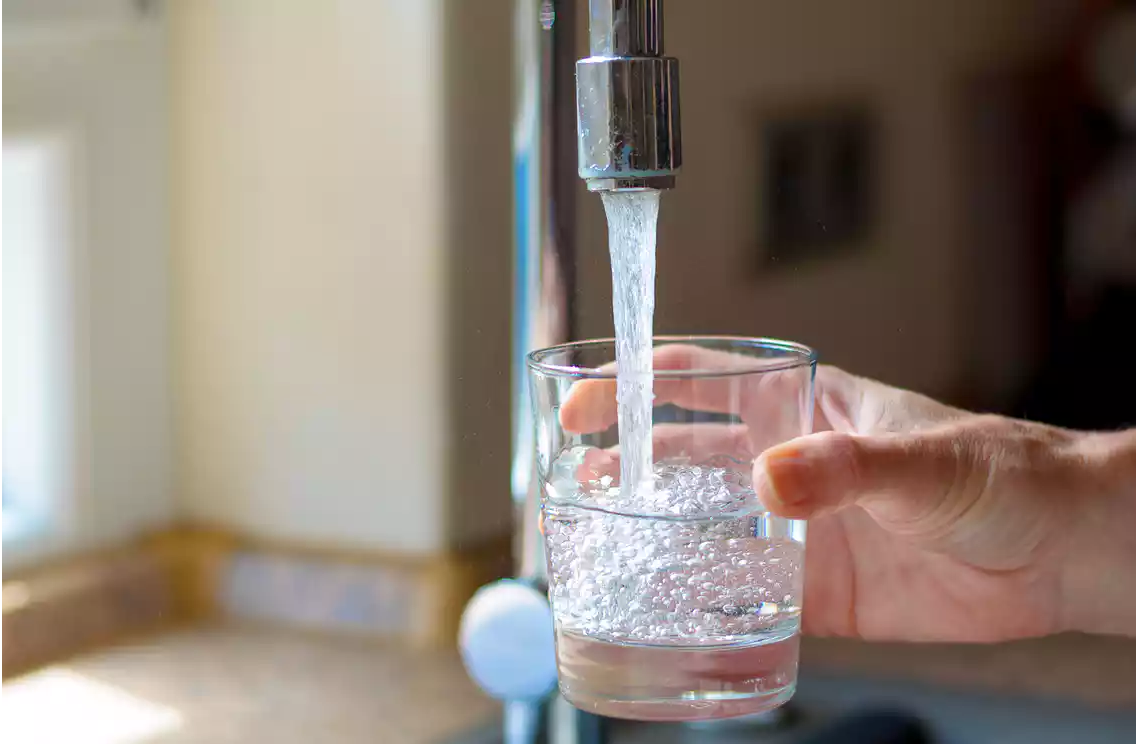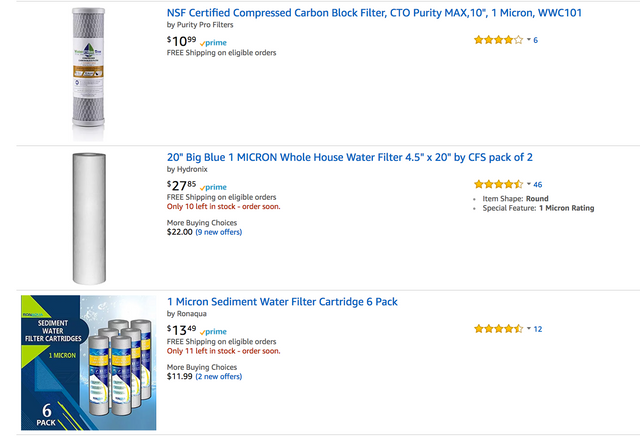Microplastic particles and fibers are turning up everywhere, even in German beers!
A stunning news story from The Guardian (and earlier stories elsewhere such as PBS) reports on a recent study that suggests that tiny fibers of plastic, small enough to be classed "microfibers" are being found in water supplies and water using products almost everywhere around the globe.

94% of US drinking water samples were found contaminated with microplastics
The issue of plastics in the ocean has been talked about for quite a while now - originally just the infamous Pacific Ocean gyre also known as the Pacific Ocean "Garbage Patch". While not the giant island of floating plastic many imagine, it is a huge area with a high concentration of small plastic pieces and particles in the water.
Various people have come up with proposals to clean up this area caused by a confluence of circulating ocean currents. But it is simply huge and very hard to estimate the size of and the amount of plastic in it. This National Geographic article gives some background information.
Even worse we now have the discovery of a Southern Pacific ocean gyre (I guess it was kind of obvious, it's surprising it took so long), this new gyre is reported to be bigger than Mexico
But wait, there's more!
We know that plastics in the ocean end up in fish and ocean predators eat fish and concentrate it up the food chain - humans also eat fish. The effects of plastic on fish and humans who eat them or their predators is not know yet. However the issues of BPA in plastics we merely drink from have long being know to have a detrimental effect on male fertility, would it be surprising if we later found other issues from actually ingesting plastics?
So that in mind this new study of terrestrial water sources and products with water in them is now showing microplastics are also fairly ubiquitous. Some examples cited by the study include microplastic particles and fibers found in:
- 94% of US drinking water samples
- 24 German beer brands
- well water samples from as far apart as Indonesia to Ireland
- honey and sugar
- air samples from France and in people's homes

These fibers looked for in the Orb study are 2.5 microns and larger also know as PM2.5. Generally particles of anything less than 5 millimeters in size are classed as "microplastics".
Removing microplastics
At least for air pollution the good news is you can remove these 2.5 micron and up particles with a standard HEPA filter as this report on Quora indicates.
Such filters run from under $100 although you'll need to replace consumables and may need more than one per household or room, depending on size.
So far filtering such particles from our water supply, while being talked about on a commercials scale, doesn't seem widely talked about by consumer water filter manufacturers. Membrane (reverse osmosis?) based technology will remove microplastics but is not what is found in your average home filter.
However scanning a bunch of water filtration products on Amazon we find that while some are filtering at the 5, 10 or 25 micro level, quite a few that claim to work to remove 1-micron sediment particles. So I believe that "whole house" sediment filters could protect your drinking water source from microplastics and fibers.

Water filtrations products from Amazon that remove 2.5 micron or smaller particle size
Where do they come from?
Well a huge source of microplastics seems to be domestic sources such as washing machines and dryers which extract fibers from our plastic based clothing and then spew them into the water supply or air. This gets in the water supply and can fall back down as rain and find itself back in our drinking water supplies which don't generally filter for them. If you get all your water from reverse osmosis purification of sea water you're probably okay - microplastics are far to big to fit through the pores in the osmosis membranes that let through water molecules by not salt.
At the moment there seems to be some effort to pass legislation to slowly remove known source - like deliberately putting plastic microbeads into commercial products such as toothpaste. Or filtering washing machine outputs. Or by commercial manufacturers like Patagonia trying to eliminate their emissions.

Plastic microfiber samples, source: Patagonia
However clearly we are a long, long way to eliminating this problem and there is just a huge volume of water that is already contaminated essentially for good unless we make heroic efforts to filter all the water in all the oceans, lakes, rivers and aquifers!
Sources:
- The Guardian: Plastic fibers found in tap water around the world, study reveals
- Orb Media: The Plastic Inside Us
- PBS Nova Next: Freshwater’s Macro Microplastic Problem
- National Geographic: Great Pacific Garbage Patch
- National Geographic: Plastic Garbage Patch Bigger Than Mexico Found in Pacific
- Quora: Do air filters remove 2.5 micro particles
- Hydroviv: Microplastics in water, what you need to know
- NOAA: What are microplastics?
- Study: Synthetic particles as contaminants in German beers
- Patagonia: An Update on Microfiber Pollution